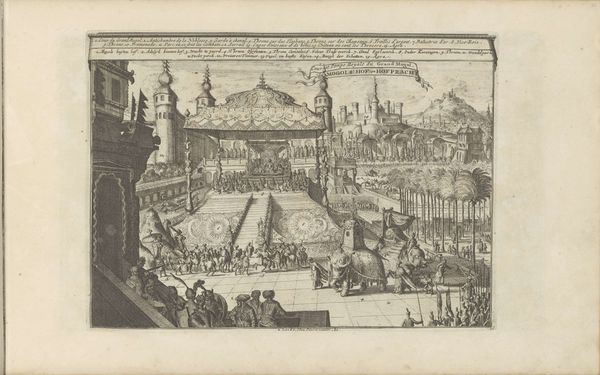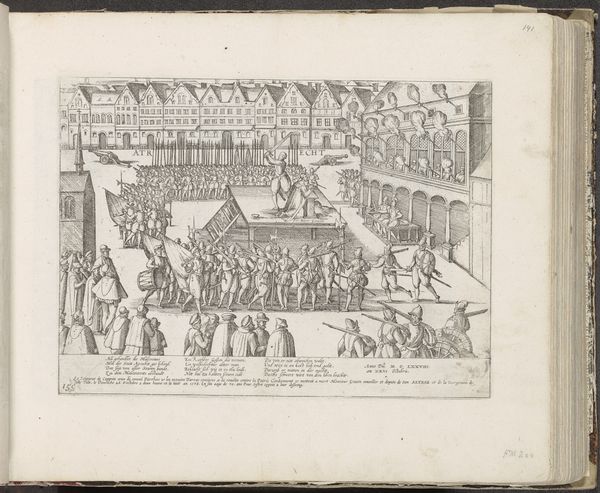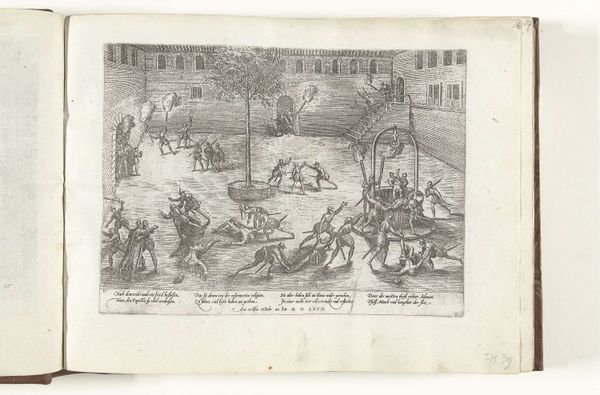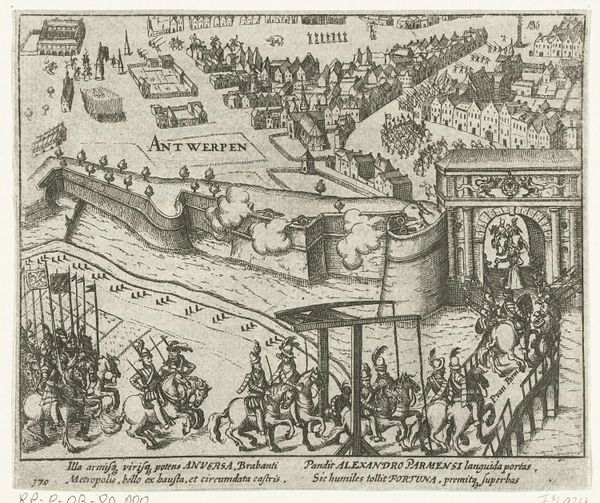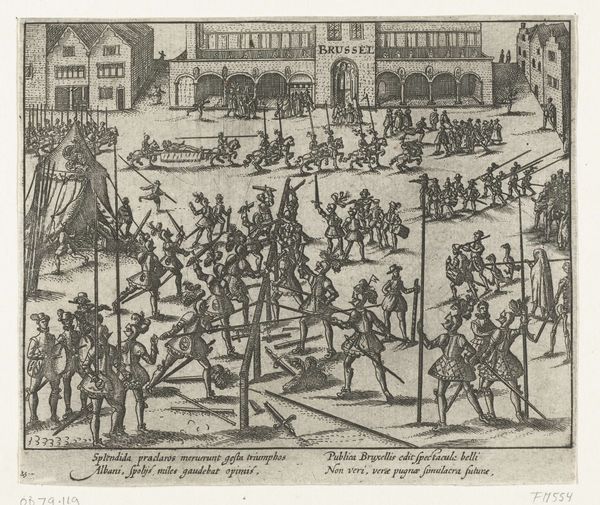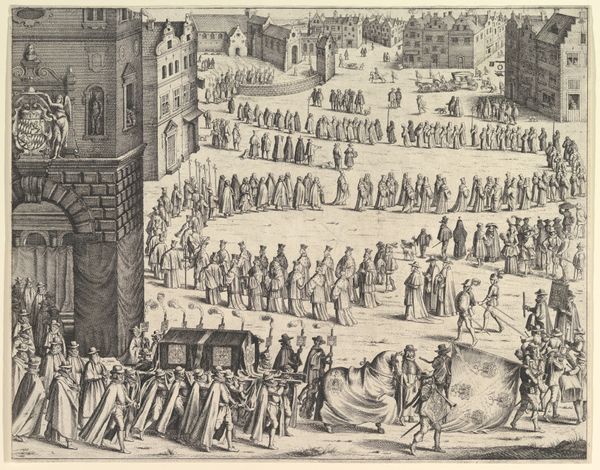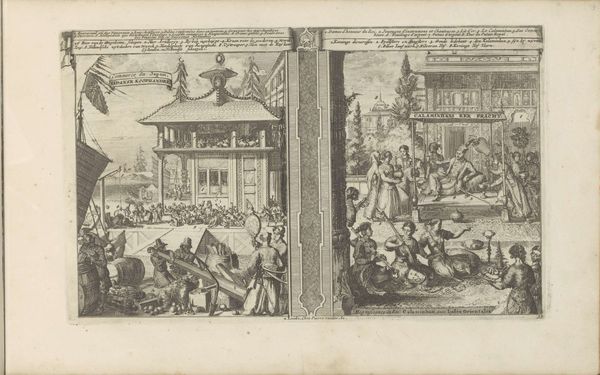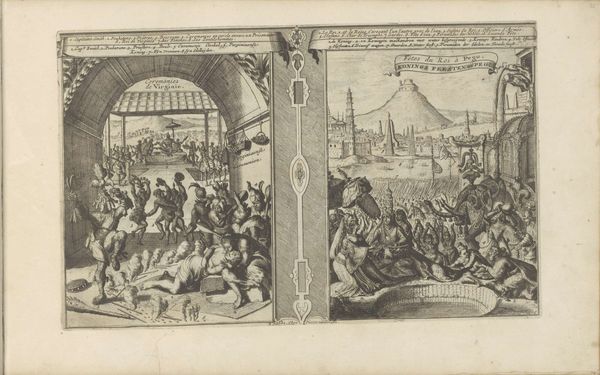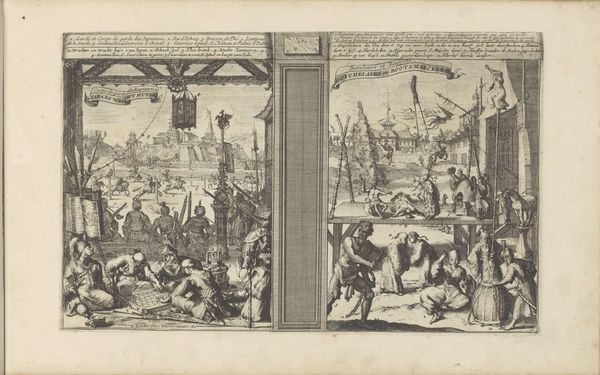
print, engraving
#
baroque
# print
#
group-portraits
#
history-painting
#
engraving
Dimensions: height 230 mm, width 290 mm
Copyright: Rijks Museum: Open Domain
Curator: Looking at this detailed engraving by Frans Hogenberg titled "Hendrik IV goes to church in Saint-Denis, 1593," dating from 1593 to 1595, I'm struck by how carefully constructed the narrative is within the print's confines. Editor: It feels like two scenes stitched together. A stately, ceremonial entrance on the left contrasts with a public display of horsemanship, almost chaotic in energy, to the right. Curator: Exactly! Hogenberg masterfully captures Henry IV's conversion to Catholicism in 1593. This strategic political maneuver allowed him to be crowned King of France and pacify the country after years of religious war. Notice how the interior scene is all solemnity and controlled lines. Editor: The columns form almost a cage, and the crowd watching him seems like a separate world. Yet Henry moving into that space signals a symbolic shift, embracing not only a new religion but the power dynamics of France itself. I see symbols of cleansing, absolution... the somber hues reinforcing it. Curator: Precisely. Saint-Denis was, and is, an incredibly powerful symbol. It held significant royal weight as it served as the burial place of French monarchs. By converting and going to church there, Henry made a calculated visual statement. It’s interesting that Hogenberg depicts what might have taken place outside simultaneously with the procession. Editor: I find the outdoor equestrian display fascinating. It could speak to the public celebration of Henry’s conversion and kingship, while at the same time suggesting the continued military aspects needed to retain order and peace. The horses, often stand-ins for nobility and power, racing freely. It evokes a show of strength after a long and difficult conflict. Curator: And let’s not forget the group gathered in the grandstand, also celebrating Henry’s coronation. I wonder about the commissioning and reception of this print, destined, in all probability, for distribution and propaganda to consolidate support. It had the function of solidifying Henry’s newly legitimized place in power. Editor: It's impressive how Hogenberg blends ceremony and political strategy into a single image, using potent iconography and visual language to sway public opinion, and visually codify Henry's conversion. Curator: It really drives home the immense social and political stakes inherent in Henry's choice and actions during that tumultuous period in French history. Editor: A true masterclass in visual persuasion, reflecting how personal faith intersects with immense political force, influencing history through symbolic representation.
Comments
No comments
Be the first to comment and join the conversation on the ultimate creative platform.
